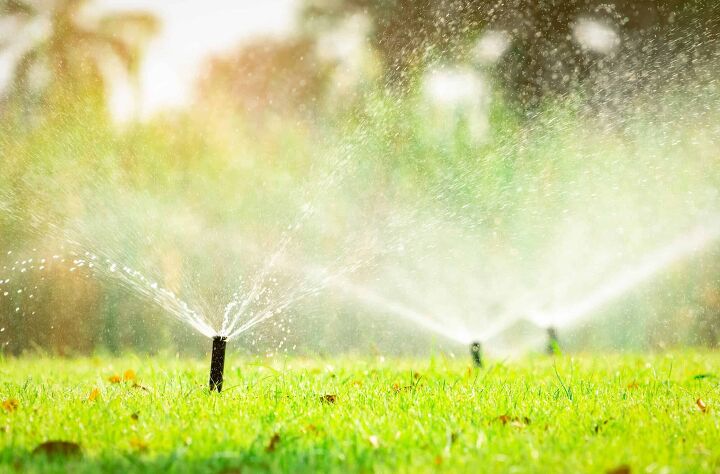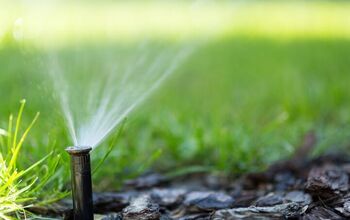How Is Over-Irrigation Damaging to Soil?

If you have a garden on your property, you likely want to avoid drought stress during your growing season. A lack of sufficient water can lead to stunted growth, a reduced yield and deformed, underdeveloped or prematurely ripened harvests.
Compensating by adding a “little extra” can lead to too much when irrigation increases the moisture in the soil. Anything in excess is negative and the same is true for irrigation. But, how exactly does over-irrigation damage soil?
There are a number of things that adversely occur within the soil when exposed to too much irrigation. The most prevalent damage is water logging that causes harm to the growth of crops and other plants and impacts the overall yield.
However, this is not the only way in which over-irrigation causes destruction to your soil. Let’s examine all the negative effects of too much water on soil.
Do You Need to Hire a Sprinkler System Contractor?
Get free, zero-commitment quotes from pro contractors near you.

What is Irrigation?
Irrigation is described as the artificial method of applying water to plants at established intervals. An irrigation system redirects water for a specific purpose and is most often used to maintain landscapes, feed agricultural crops, grow plants on a household property or provide necessary water during a drought.
Irrigation offers ample moisture required for development, overall growth, germination and other associated functions. In some cases, nutrients are delivered to crops by way of irrigation. The sources of water that are involved in irrigation come for places like ponds, lakes, canals, wells, groundwater, dams and tube-wells.
The rate, frequency, quantity and time will be different depending on the individual crop or plant and will also vary based on the season and type of soil. For instance, crops grown in the summer will require more water than winter crops.
Why Does Over-Irrigation Harm Soil?
In order to avoid potential damage caused by droughts, some farmers tend to increase the irrigation they have established for their crops. The additional irrigation serves as an insurance policy, providing enough water for the crops to endure during these taxing periods.
Although the intentions may be pure, this excess irrigation does harm the soil. Over-watering increases moisture in the active root zone over the field capacity, or the amount of water the crops can hold. Any moisture above this limit drains out of the root zone and deprives the crops of water, among many other issues.
One of the most damaging consequences of over-irrigation is the amplified salinity of the soil. However, this isn’t the only repercussion that can occur as a direct result of over-irrigation.
How Does Over-Irrigation Damage Soil?
In order for irrigation to do its intended job and function efficiently, over-irrigation should be avoided. An excess of water can lead to water logging in your garden or field and cause unnecessary harm to your harvests, impacting yield. In addition to possible water logging, over-irrigation impacts soil in the following ways:
- A surplus of water in soil decreases the soil’s overall pH. In turn, this increases its acidity and a disrupted pH can cause hindered plant growth.
- Over-irrigation results in an oxygen disparity near the root zone in the soil.
- Excess water can create unnecessary stress on plants, effectively reducing their water intake.
- Over-irrigation will drown the roots of plants and affect their overall growth.
- An overload of water in soil can contribute to an increase of microbial growth. In water-logged zones, microbes have the ability to multiply much faster. Therefore, extra water can result in microbial diseases and infections.
- Water logging in the soil causes a reduction in the exchange of air between the atmosphere and the soil. It’s important that soil has sufficient air exchange to preserve texture and permeability. This imbalance is one of the main causes of slow root and overall plant growth.
- Over-irrigation results in excess nitrogen entering the soil. Nitrogen is an essential nutrient for overall plant growth and soil fertility. However, too much nitrogen can seriously harm your garden and if left unattended, nitrogen toxicity can be fatal for your plants.
- Watering your plants beyond the required limit delays the transport of essential nutrients to the roots and other parts of your plants.
- An excess of water leads to weed pressure and can one of the reasons why excess weeds are sprouting up in your garden or field.
- Over-irrigation can potentially flush away pesticides and fertilizers, further decreasing yield and overall growth of plants.
- A soil that has been water logged has a reduced amount of organic matter. Organic material is vital for increasing soil fertility. Instead, you may experience an accumulation of salt on the soil’s surface that prevents the absorption of nutrients by the plants.
Overall, over-irrigation can be the direct cause of a number of plant and root diseases. Make that your garden is irrigated proportionally to maintain fertility and growth of your garden.
Direct Impacts of Irrigation on the Environment
Since irrigation systems involve redirecting water from lakes, rivers, underground sources and other bodies of water, they have a direct environmental impact. Some of these effects include higher levels of groundwater in irrigated locations, a reduction of downstream water flow to the sourced streams and rivers, and an increase in evaporation.
Increased evaporation in irrigated locations can result in atmosphere instability and amplify rainfall levels downwind of the irrigation. These climate changes are a direct product of shifts in the natural moisture in the nearby atmosphere.
Indirect Impacts of Irrigation on the Environment
In addition to direct impacts, irrigation also has indirect effects on surrounding environments. These impacts take longer to develop, may not be as prevalent and generate longer-lasting changes. These indirect impacts of irrigation on the environment include:
Soil Salinization
Soil salinization occurs when the soil’s salt content increases above naturally occurring levels. Irrigation displaces a substantial amount of water from one area and moves it to another. The area that has lost the water is generally left with a high concentration of salt in the remaining water.
High levels of salt in soil makes it challenging for plants to intake the necessary amount of water and nutrients to thrive.
Water logging
As previously mentioned above, one of the major concerns associated with irrigation is the indirect impact of water logging. This occurs when the soil becomes oversaturate with water, encouraging anaerobic conditions.
Anaerobiosis results in unhealthy plant roots from chemical reactions, such as a decrease in manganese and iron in the soil.
Ecological Damage
Ecological damage caused by irrigation will take longer to develop than the above impacts. Reduced downstream river flow is one of the most common causes of ecological damage. With a dramatic decrease in river flow, it can cause wetlands to disappear and insufficient municipal, drink and industrial water supplies.
With less water making its way to the ocean, coastal erosion is possible. This damages habitats and ecosystems in coastal areas. Additionally, saltwater from the ocean will exist in increased amounts within estuaries. In this case, significant changes to the habitats and ecosystems of these waterways will also arise.
Socioeconomic Damage
Less obvious impacts on socioeconomic health can also occur from reduced water flow. More specifically, irrigation can result in a decrease in shipping and fishing opportunities. Over extraction of water for agricultural purposes threatens local fish populations and causes an inequity in the natural food chain.
It can also indirectly affect the local human populations who rely on these fish as a source of food and economic activity. Shipping opportunities are impacted when water transportation does need receive the appropriate amount of water to navigate. This reduces trade and other economic activity in these areas.
Preventing Over-Irrigation
Fortunately, all of the above consequences can be prevented by avoiding over-irrigation. However, you must understand the water storage that is available to the plants in the active root zone. For annual crops, the depth of the active root zone starts at a low level and then deepens.
By combining the water application rate of your irrigation system and the available water storage, you can determine how long the soil can be irrigated before leaching starts. Leaching refers to the loss of water-soluble plant nutrients in the soil, caused by irrigation and rain.
In most cases, the best way to prevent over-irrigation is to ensure that irrigation takes place more often but over shorter periods. When in doubt, contact a professional irrigation company to help you come up with an appropriate irrigation plan.
Do You Need to Hire a Sprinkler System Contractor?
Get free, zero-commitment quotes from pro contractors near you.

Wrapping It Up
Over-irrigation, and irrigation in general, has major impacts on the soil in your garden and the world around us. Excess water is not only a waste of resources, it also reduces the pH, fertility and porosity of soil which are all vital factors in plant growth. Make sure that you are providing the proper amount of water to your plants in order to prevent any unnecessary issues from arising and ensure overall plant health and high yields. If you’re ever questioning your irrigation efforts, contact a professional.
For more irrigation related questions, check out: “ Does A Sprinkler System Add Value To Your Home?” and “ Sprinkler Zone Won’t Turn Off? (Here’s How To Fix It).“

Jessica considers herself a home improvement and design enthusiast. She grew up surrounded by constant home improvement projects and owes most of what she knows to helping her dad renovate her childhood home. Being a Los Angeles resident, Jessica spends a lot of her time looking for her next DIY project and sharing her love for home design.
More by Jessica Stone












![10 Best Scroll Saws for 2022 [Ultimate Reviews & Buyer's Guide]](https://cdn-fastly.upgradedhome.com/media/2023/07/31/9070684/10-best-scroll-saws-for-2022-ultimate-reviews-buyer-s-guide.jpg?size=350x220)














